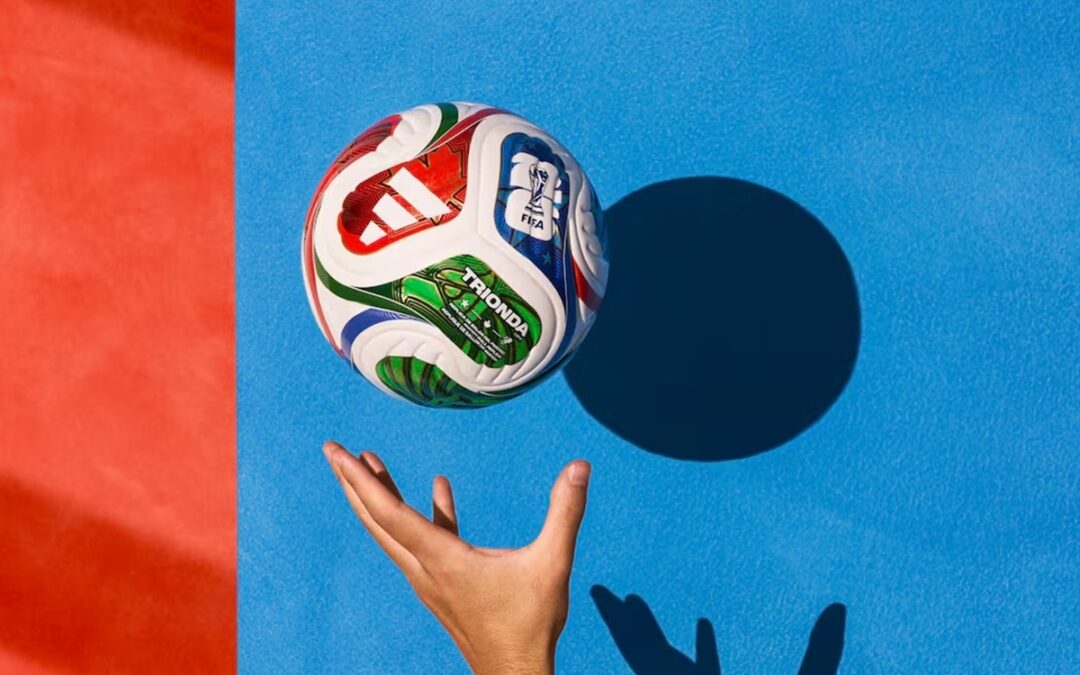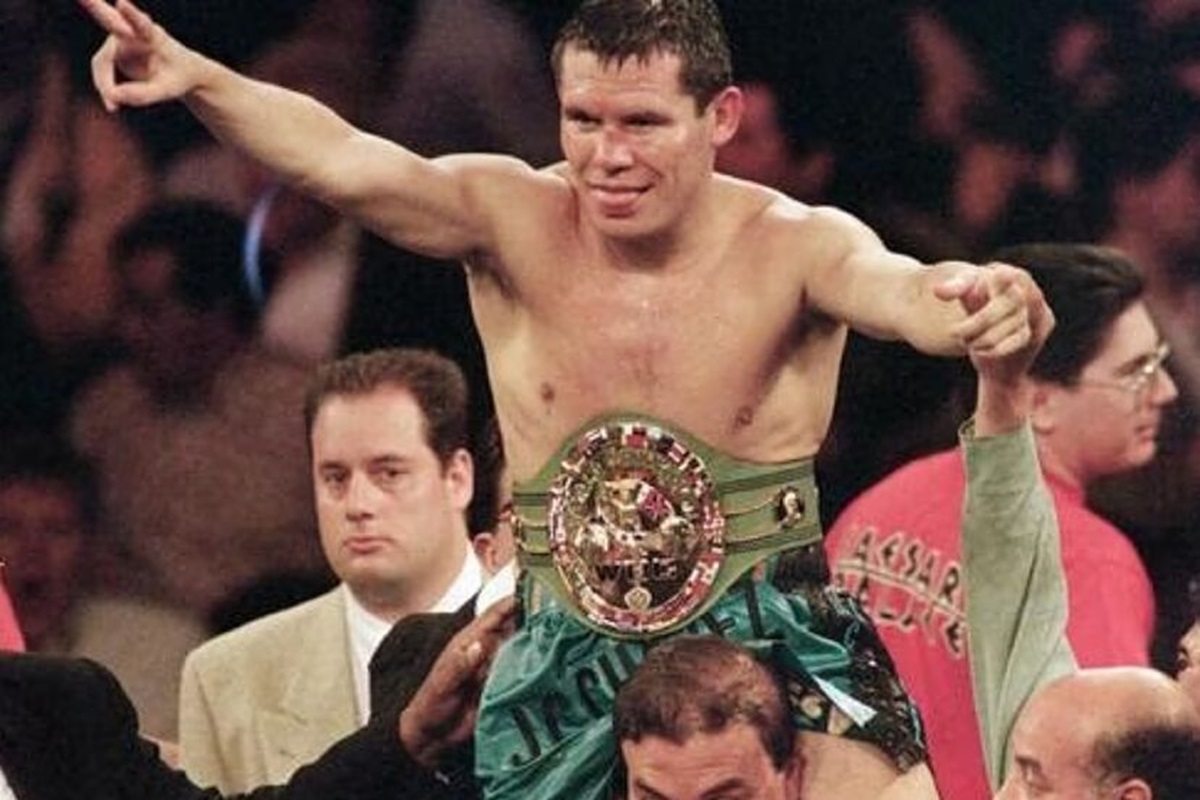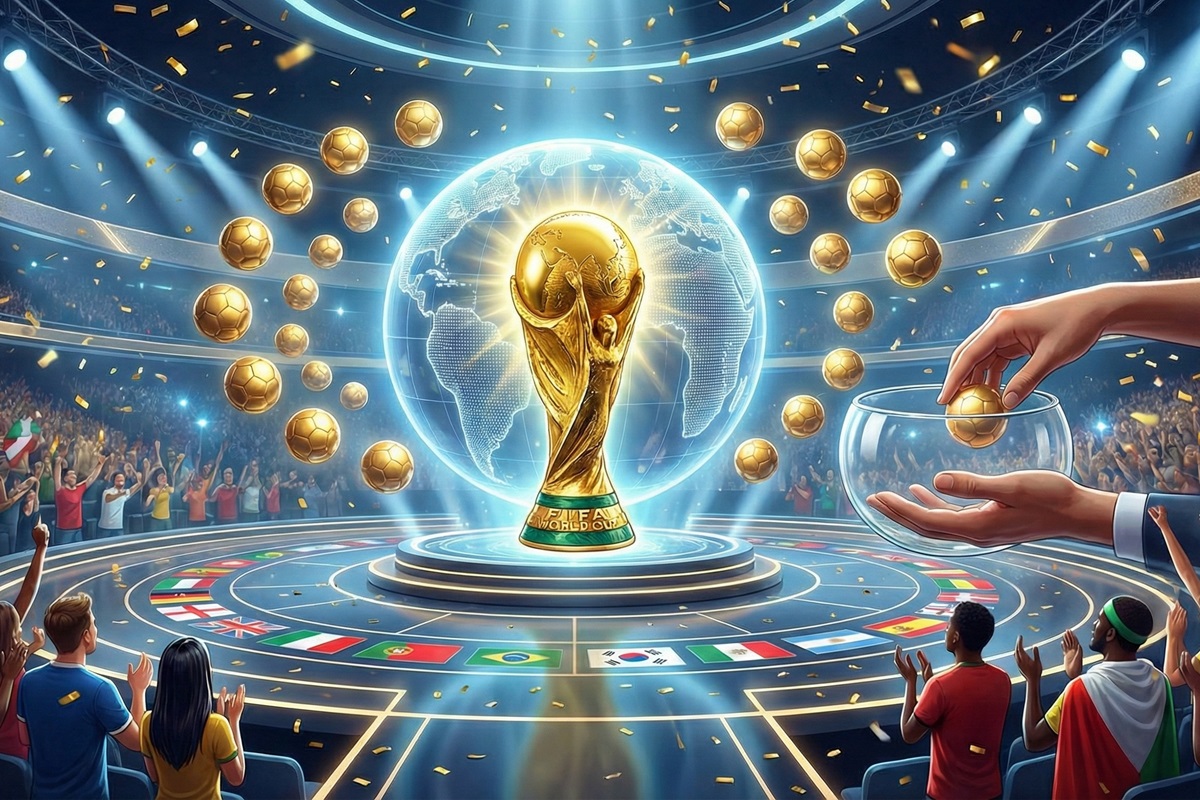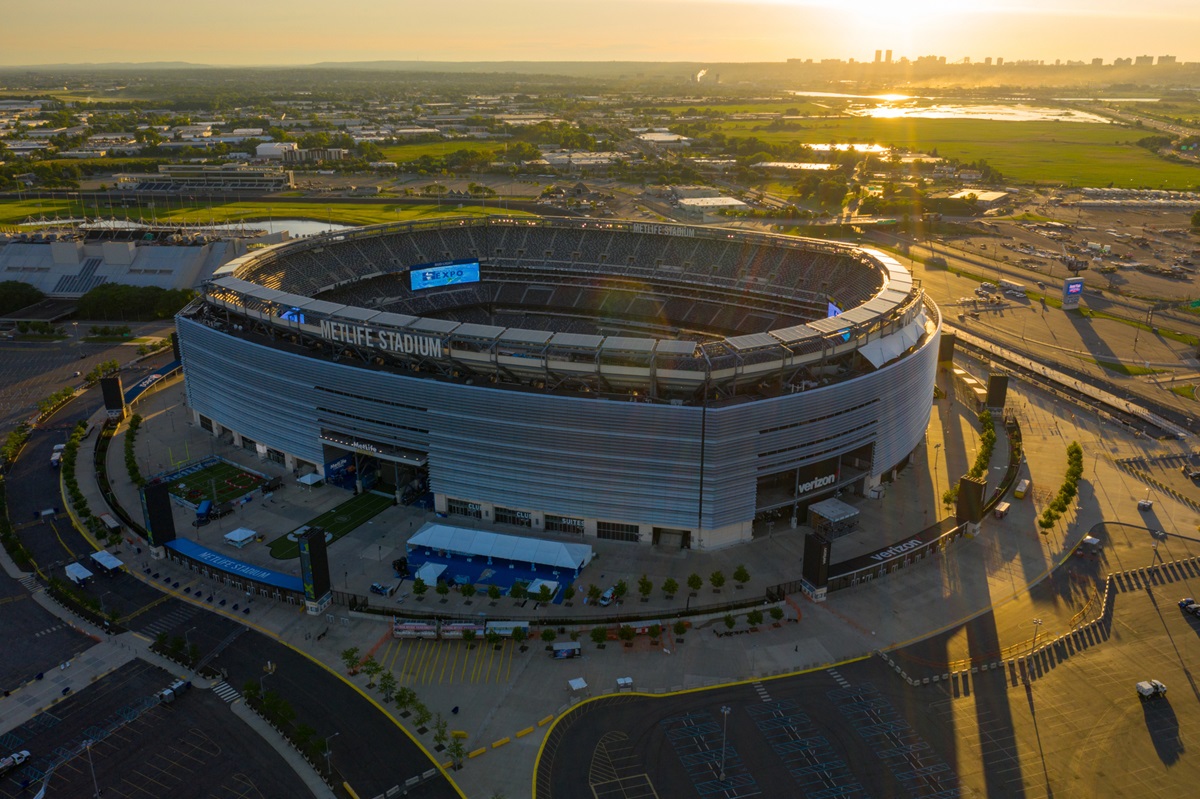Football has symbols that transcend the game. Among them, few are as iconic as the official FIFA World Cup ball. Every four years, millions of eyes follow that sphere rolling across packed stadiums, scoring goals that turn into unforgettable memories. For 2026, FIFA and Adidas unveiled Trionda, the ball that will represent the first World Cup ever jointly hosted by three countries: Mexico, the United States, and Canada.
More than a sporting object, Trionda embodies a cultural, technological, and symbolic story meant to capture the essence of a tournament unprecedented in scale and significance.
A Design Full of Identity
At first glance, Trionda stands out for its color palette. On a white background, green, blue, and red represent the three hosts: green for Mexico, blue for the United States, and red for Canada. Each shade is accompanied by a national symbol:
- A maple leaf, Canada’s unmistakable emblem.
- A golden eagle, a historic symbol of Mexico.
- A star, directly referencing the U.S. flag.
Golden details outlining the edges are no accident either: they pay tribute to the FIFA World Cup Trophy, reminding fans that this ball is not just another sphere, but the silent protagonist of the planet’s most important tournament.
The name Trionda carries its own story. It combines the prefix “tri”, symbolizing the three host nations, with “onda” (wave), evoking a collective wave of joy that will sweep across North America during the competition’s 104 matches.
Cutting-Edge Technology
Beyond its design, Trionda is a showcase of how innovation has reshaped football. Adidas introduced a four-panel thermally bonded construction, a step forward from the classic 32-panel balls. This geometry improves stability, aerodynamics, and ensures a smoother flight.
One of its most revolutionary features is the 500 Hz motion sensor, capable of sending real-time data to the VAR system. This chip records every touch of the ball, assisting referees in key situations such as offsides or potential handballs. To ensure balance, engineers added counterweights to the panels opposite the sensor, stabilizing its center of gravity.
The textured surface also plays a practical role: it enhances grip under wet conditions, giving players and goalkeepers better control in adverse climates. In a tournament spanning from Canada to Mexico, with such diverse weather, this detail could prove decisive.
Article related: FIFA Takes a Risk with Three Mascots for the 2026 World Cup
An Unprecedented World Cup
The unveiling of Trionda comes in a historic context. The 2026 edition will be the first to feature 48 teams, increasing the number of matches from 64 to 104. Venues will be divided into three regions—west, central, and east—to minimize travel across such a vast territory.
In this sense, the ball becomes a symbol of unity. With every pass and every goal, Trionda will be the common thread linking cities as different as Toronto, Los Angeles, Mexico City, or Miami. A round object connecting cultures, geographies, and emotions through one universal language: football.
The Evolution of World Cup Balls
The history of the World Cup ball mirrors the evolution of the sport itself. From improvised leather models to sophisticated spheres with digital sensors, each ball tells a unique chapter:
- 1930, Uruguay: No official ball. In the final, Argentina and Uruguay each used their own: the Argentine Tiento and the Uruguayan T-Model.
- 1950, Brazil: The Superball Duplo T eliminated leather laces and introduced a valve for inflation, setting modern standards.
- 1970, Mexico: The Adidas Telstar, with its 32 black-and-white panels, revolutionized visibility on black-and-white television and became football’s classic image.
- 1978, Argentina: The Tango introduced triangular designs creating an illusion of circles, influencing decades of designs.
- 1986, Mexico: The Azteca was the first fully synthetic ball, decorated with pre-Hispanic motifs. It starred in Maradona’s “Hand of God.”
- 2002, Korea-Japan: The Fevernova broke with the Tango aesthetic but was criticized for being too light.
- 2010, South Africa: The Jabulani, notorious for its unpredictability, was called unmanageable by many goalkeepers.
- 2014, Brazil: The Brazuca, chosen by popular vote, regained trust with a stable performance praised by players.
- 2022, Qatar: The Al Rihla featured thermally bonded panels inspired by dhow sails and introduced internal sensors, paving the way for the tech perfected in Trionda.
Adidas’ Lasting Legacy
Since the Telstar of 1970, Adidas has supplied every World Cup ball, forging a partnership spanning more than five decades. Each design served as a laboratory of innovation, testing materials, shapes, and technologies that later spread to club football and pitches worldwide.
Trionda is not only Adidas’ fifteenth consecutive World Cup ball, but also a reminder of how the German brand has turned each edition into an opportunity to reinvent the way football is played and experienced.
Between Nostalgia and the Future
Trionda is more than just a ball—it’s the emblem of a historic World Cup. Its design honors three nations, its technology promotes fairness on the pitch, and its name evokes unity through sport. In its seams, texture, and chip lies nearly a century of football evolution—from hand-stitched leather to artificial intelligence applied to the game.
When it first rolls across the grass in the summer of 2026, it won’t just mark the beginning of the biggest World Cup ever held. It will also open a new chapter in the fascinating history of World Cup balls.







